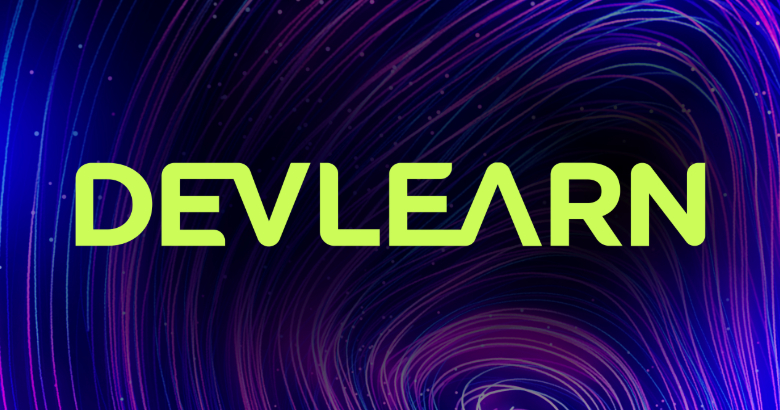Your cart is currently empty!

How to Align Training Programs with Organizational Goals using KPIs and AI

The usual approach to designing training programs (learning experiences) begins by identifying targeted learning objectives (outcomes) supporting organizational goals. Measures called key performance indicators (KPIs) further clarify those objectives. Organizations can now shift to “SMART KPIs” powered and influenced by Artificial Intelligence (AI). This approach aims to maximize the impact of training initiatives on overall organizational performance by leveraging AI’s analytical capabilities alongside human expertise.
Overview of the crucial steps to successful transformation
The classic approach to aligning training programs with organizational objectives is a familiar process for managers that begins with three essential steps:
- Identify organizational goals
- Determine relevant KPIs
- Design targeted training programs
These steps look simple, but there are some tricky details.
Steps to identify organizational goals
Identifying organizational goals begins with three key steps, which are tricky because they require collaboration between organizations and groups.
Determining needs
The crucial first step involves reviewing the organization’s mission and vision, analyzing current business strategies, collaborating with department heads and subject matter experts, conducting meetings with senior leadership, examining industry trends and the competitive landscape, considering feedback from various departments, and prioritizing goals based on their potential impact and alignment with core values. Organizational goals include increasing market share, reducing employee turnover, or launching new product lines.
Determining relevant KPIs
This step requires breaking down each goal into measurable components, collaborating with department heads and subject matter experts, ensuring KPIs are SMART (Specific, Measurable, Achievable, Relevant, and Timebound), considering both leading and lagging indicators, limiting the number of KPIs to a manageable set, and verifying that data is available. KPIs effectively measure progress toward goals. Relevant KPIs include sales revenue per employee, customer satisfaction scores, employee engagement levels, time-to-market for new products, error rates, and number of innovative ideas implemented.
Designing targeted training programs
This step includes conducting a thorough needs analysis, prioritizing training needs, developing learning objectives linked to KPIs and goals, selecting appropriate training methodologies, creating relevant content, incorporating real-world scenarios, designing assessments, building in opportunities for application, developing a communication plan to articulate how the training connects to goals and KPIs, and creating a post-training support system that reinforces learning and encourages behavior change.
Challenges in identifying organizational goals and an AI strategy for dealing with each
There are three frequent challenges to goal setting and an AI strategy for each:
- Lack of clarity and consensus: Different stakeholders may have varying perspectives on priorities, leading to conflicting views and a lack of clear direction. Use AI-powered sentiment analysis and natural language processing to identify common themes and areas of misalignment in internal communications, surveys, and feedback;
- Short-term vs. long-term balance: Organizations often need help balancing immediate objectives with long-term strategic goals. Implement AI-driven predictive modeling and scenario analysis tools to simulate the long-term impacts of various short-term decisions.
- Adapting to rapid change: The fast-paced business environment makes it challenging to set stable long-term goals as market conditions, technologies, and customer preferences shift rapidly. Use AI for real-time market intelligence and trend forecasting, analyzing large amounts of data to identify emerging trends and potential disruptions.
Challenges to using AI to identify KPIs and a strategy for each
- Challenges to data quality and availability: AI systems require high-quality, comprehensive data, but organizations often need help with complete or consistent data, legacy systems, lack of historical data, and data privacy concerns. To address data quality and availability, implement a comprehensive data governance framework, including establishing data quality standards, creating a centralized data warehouse, implementing data cleansing processes, and regularly auditing data quality.
- Challenges to contextual understanding and nuance: AI may need help to grasp the full business context and nuances that human experts understand intuitively, potentially leading to statistically significant but practically irrelevant KPI suggestions. Adopt a hybrid AI-human approach, using AI for initial analysis, having domain experts review and refine suggestions, incorporating qualitative inputs, and training the AI system.
- Adaptability to changing goals and environments: AI Systems may face challenges in quickly adapting to new strategic directions or recognizing when established KPIs become obsolete. To enhance adaptability, implement an agile AI system with continuous learning capabilities, regularly retrain the model, use reinforcement learning techniques, and incorporate external data sources.
Challenges in designing targeted training programs and AI suggestions for better KPIs
- Establishing clear causal links: It can be challenging to connect specific training interventions to improvements in KPIs since so many factors beyond training can influence performance. To develop clear causal links, implement a robust measurement and evaluation framework, including pre-training assessments, control groups, multi-level evaluation models, data analytics, and qualitative data collection. Yes, that’s a far cry from actual practice in some organizations. However, each of those practices is crucial to the best outcomes.
- Balancing breadth and depth: KPIs often represent complex aspects of organizational performance, making it challenging to decide on the appropriate scope and depth of training content. To balance scope breadth and depth, adopt a modular, personalized approach, breaking content into focused modules aligned with specific KPI components, creating a core curriculum with specialized modules, and using adaptive learning technologies. These steps are essential to ensure learner engagement.
- Ensuring training transfer and sustained behavior change: Translating learning into on-the-job performance improvements that affect KPIs can be difficult due to resistance to change, lack of practice opportunities, and motivation issues. Develop a comprehensive transfer of learning ecosystem, including real-world projects, post-training action planning, mentoring programs, peer learning networks, performance support tools, and aligned performance management systems. Without transfer and sustained behavior change, has the desired learning taken place?
Conclusion
Research results underscore the importance of aligning training initiatives with organizational goals and using data-driven approaches to measure and improve effectiveness. AI has potential to enhance these processes.
The strategies outlined in this article aim to create more targeted, effective training programs that directly contribute to organizational success.







